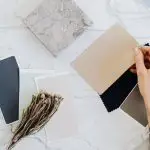Looking for ways to effortlessly join fabric without permanent commitment? Discover six simple techniques to temporarily attach fabric to fabric. Whether you're sewing, crafting, or making quick adjustments, these methods will securely hold your fabrics together without leaving a lasting mark.
From the convenience of safety pins and fabric clips to the versatility of double-sided tape and adhesive Velcro tape, you'll have the perfect tools at your fingertips. Say goodbye to the hassle of traditional sewing and embrace these efficient solutions for a seamless fabric fusion.
Key Takeaways
- Safety pins and fabric clips are quick and efficient methods for temporarily attaching fabric.
- Consider alternative methods like basting stitches or fabric clips to avoid potential risks and damage.
- Double-sided tape and fabric glue dots are creative alternatives to fabric clips that offer a strong hold without the need for pins or clips.
- Stitch Witchery and adhesive Velcro tape are practical options for temporarily attaching fabric, providing versatility and easy removal without fabric damage.
Safety Pins
You can easily attach fabric to fabric temporarily using safety pins. This method is a quick and efficient way to hold fabrics together for sewing, fitting, or temporary fastening.
When using safety pins, it's important to consider some alternative methods as well. While safety pins are convenient, basting stitches or fabric clips can also be effective for temporarily attaching fabric.
Be mindful of potential risks when using safety pins, such as accidentally pricking your fingers or causing snags in delicate fabrics. To minimize these risks, it's advisable to use larger safety pins for heavier fabrics and smaller, finer pins for lightweight fabrics. Additionally, always ensure that the pins are securely fastened to avoid any mishaps.
When using safety pins, it's essential to handle them with care to prevent any injuries or damage to the fabric. While safety pins are a popular choice for temporary fabric attachment, it's important to be aware of the potential risks and consider alternative methods for different fabrics and projects.
Fabric Clips
When considering alternative methods for temporarily attaching fabric, explore the use of fabric clips as a convenient and secure option. Fabric clips are small, sturdy tools that provide a firm grip on fabrics without causing any damage. They're particularly useful when working with delicate or thick fabrics, as they offer a strong hold without leaving puncture marks. Fabric clips are also beneficial when handling multiple layers of fabric, ensuring that the layers stay aligned during sewing.
In sewing techniques, fabric clips are essential for holding fabrics in place while you sew seams or attach trims. They're especially handy when working on curved or intricate designs where traditional fabric fasteners like pins may not be as effective. Fabric clips come in various sizes, making it easy to choose the right clip for the specific task at hand. Whether you're a beginner or an experienced sewer, incorporating fabric clips into your sewing arsenal can streamline your projects and provide a professional finish.
Double-Sided Tape
Consider using a small amount of double-sided tape as an alternative to fabric clips for securing fabrics in place when sewing. Double-sided tape offers a creative alternative for temporarily attaching fabric to fabric. It provides a strong hold without the need for pins or clips, making it a convenient and efficient temporary solution for various sewing projects.
To use double-sided tape, simply cut a small piece and apply it to the fabric where you need it to be secured. Then, remove the backing and press the fabric firmly in place. The tape is easily adjustable and can be repositioned as needed, making it ideal for precise fabric placement.
When using double-sided tape, be sure to choose a type specifically designed for fabric to ensure it adheres well without causing damage. Additionally, always test the tape on a small, inconspicuous area of the fabric first to avoid any potential residue or damage.
Double-sided tape offers a straightforward and effective method for temporarily attaching fabric, providing a quick and reliable solution for securing fabrics during sewing projects.
Fabric Glue Dots
For a reliable method of temporarily attaching fabric to fabric, use a few fabric glue dots for a secure hold without the need for pins or clips. Fabric glue dots offer a convenient and mess-free way to bond fabric together, making them a popular choice for various crafting and sewing projects.
Here are some key points to consider when using fabric glue dots:
- Alternative Adhesives: Fabric glue dots provide a great alternative to traditional sewing methods or liquid fabric glues. They offer a quick and easy solution for temporary fabric bonding without the need for sewing or waiting for glue to dry.
- Convenience: Fabric glue dots are pre-measured and ready to use, eliminating the need for cutting or measuring adhesive materials. This makes them an efficient choice for quick fabric projects or repairs.
- Pros and Cons: Fabric glue dots offer a strong initial bond, but they may not be as durable as sewn or glued seams. They're ideal for temporary fixes or when sewing isn't an option, but may not be suitable for long-term or heavy-duty applications.
- Mess-Free Application: Unlike liquid adhesives, fabric glue dots are clean and easy to apply, leaving no residue or potential for spills.
Fabric glue dots provide a convenient and efficient way to temporarily attach fabric, offering a practical solution for various crafting and sewing needs.
Stitch Witchery
You can use Stitch Witchery as a convenient and quick method for temporarily attaching fabric to fabric without the need for sewing. This no-sew fabric bonding product is ideal for creating hems, trims, and other fabric accents.
To use Stitch Witchery, start by placing the fabric with the wrong side up. Then, cut a piece of Stitch Witchery to match the length of the fabric edge and place it between the layers of fabric. Use an iron to press the fabric and the Stitch Witchery together. The heat from the iron activates the adhesive in the Stitch Witchery, creating a strong bond between the fabrics. After pressing, allow the fabric to cool and set for a few minutes before handling.
Stitch Witchery is also commonly used for iron-on hemming, providing a professional and clean finish to your fabric projects. It's important to follow the manufacturer's instructions for the specific type of fabric you're working with to ensure the best results.
With Stitch Witchery, you can achieve secure fabric bonding without the need for sewing, making it a versatile and practical option for temporary fabric attachment.
Adhesive Velcro Tape
To temporarily attach fabric to fabric, use adhesive Velcro tape. Adhesive Velcro tape offers a convenient and temporary solution for fastening fabrics together. Here are four reasons why adhesive Velcro tape is an excellent choice for temporary fabric attachment:
- Velcro Alternatives: When traditional sewing or permanent fabric fasteners aren't viable, adhesive Velcro tape provides a practical alternative for temporary attachment.
- Easy Removal: Adhesive Velcro tape allows for easy removal without leaving sticky residue or causing damage to the fabric, making it ideal for temporary applications.
- Versatility: Adhesive Velcro tape comes in various widths and colors, offering versatility to suit different fabric types and aesthetic preferences.
- Reusability: The tape's adhesive backing allows for reusability, making it a sustainable option for temporary fabric attachment.
Adhesive Velcro tape is a reliable choice for those seeking a temporary and non-invasive method to attach fabrics together. Whether for craft projects, home decor, or temporary repairs, adhesive Velcro tape provides a practical solution for temporary fabric attachment needs.
Frequently Asked Questions
Can These Temporary Attachment Methods Be Used on Delicate or Fragile Fabrics?
When working with delicate materials, consider alternative methods for temporary attachment. Gentle fabrics require extra care, so test a small, inconspicuous area first. Adhesive dots or fabric-friendly tapes may be suitable options.
Are There Any Specific Types of Fabric That These Methods May Not Work Well On?
Certain fabric types like silk or satin may present challenges when using temporary attachment techniques due to their delicate nature. In such cases, consider alternative methods such as hand basting to ensure fabric compatibility and avoid any limitations.
Can These Attachment Methods Be Easily Removed Without Causing Damage to the Fabric?
Yes, these attachment methods can be easily removed without causing damage to the fabric. They are designed for temporary attachment, allowing for versatility and fabric preservation while providing a secure hold.
Are There Any Precautions or Safety Tips to Keep in Mind When Using These Temporary Attachment Methods?
When using these temporary attachment methods, it's important to follow precautionary measures and safety guidelines. Always test on a small, inconspicuous area first. Avoid applying excessive force when detaching to prevent fabric damage.
Can These Methods Be Used for Outdoor or High-Activity Situations, Such as Sports or Dancing?
In outdoor activities or dance performances, these methods provide temporary fabric attachment. Consider potential movement and weather conditions. Secure fabric firmly, avoiding potential hazards. Monitor for any signs of loosening during high-activity situations.
- Tetron Fabric for Marine Applications: Durability and Use Cases - June 18, 2025
- Tetron Fabric for Outdoor Furniture: Weather Resistance and Care - June 18, 2025
- Tetron Fabric for Wall Coverings: Style and Application Tips - June 18, 2025







